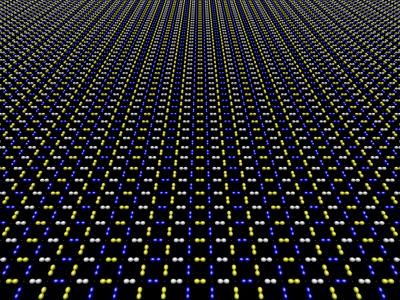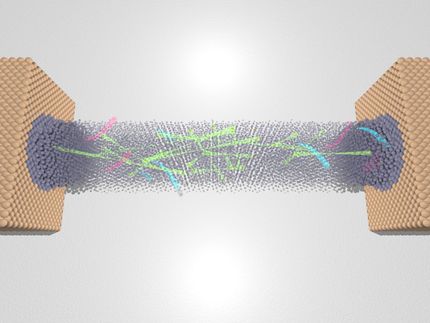Study helps unlock mystery of high-temp superconductors
A Binghamton University physicist and his colleagues say they have unlocked one key mystery surrounding high-temperature superconductivity. Their research, published in the Proceedings of the National Academy of Sciences, found a remarkable phenomenon in copper-oxide (cuprate) high-temperature superconductors.

This illustration shows the d-orbital shape that Binghamton physicist Michael Lawler and his colleagues observed in the density wave of a high-temperature superconductor.
Binghamton University
Michael Lawler, assistant professor of physics at Binghamton, is part of an international team of physicists with an ongoing interest in the mysterious pseudogap phase, the phase situated between insulating and superconducting phases in the cuprate phase diagram.
"Evidence has been accumulating that this phase supports an exotic density wave state that may be key to its existence," the physicists write in the new journal article. A density wave forms in a metal if the fluid electrons themselves crystalize.
Using a scanning tunneling microscope (STM) to visualize the electronic structure of the oxygen sites within a superconductor, the team found a density wave with a d-orbital structure. That's especially surprising because most density waves have an s-orbital structure; their electron density is isotropic. "It's not the pattern you would expect," Lawler says.
In this research, Lawler and his colleagues focused on a member of the cuprate class of superconductors called bismuth strontium calcium copper oxide (BSCCO). "We now believe these density waves exist in all cuprates," says Lawler, a theorist whose contribution to the research involved subtle uses of the Fourier transform, a mathematical analysis that's useful when examining amplitude patterns in waves.
Most read news
Topics
Organizations
Other news from the department science

Get the chemical industry in your inbox
From now on, don't miss a thing: Our newsletter for the chemical industry, analytics, lab technology and process engineering brings you up to date every Tuesday and Thursday. The latest industry news, product highlights and innovations - compact and easy to understand in your inbox. Researched by us so you don't have to.


























































